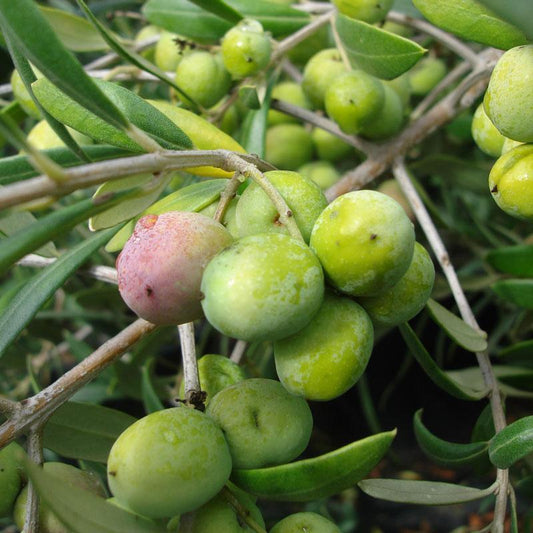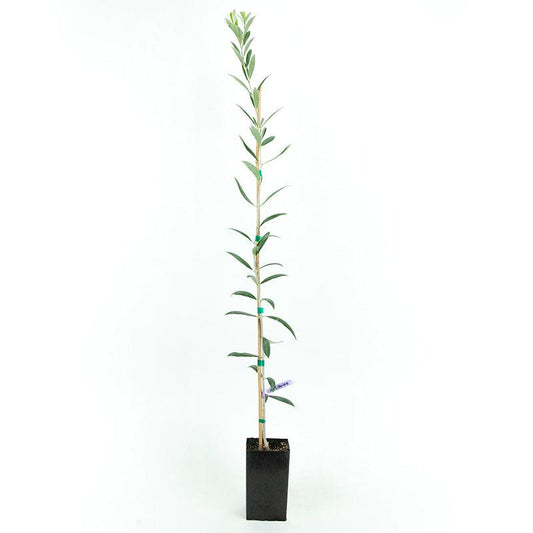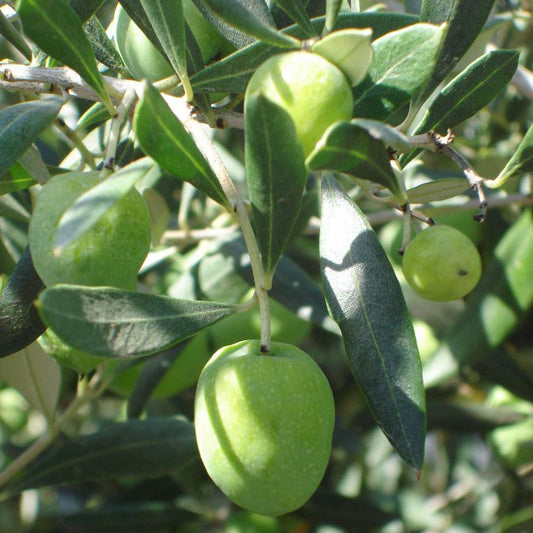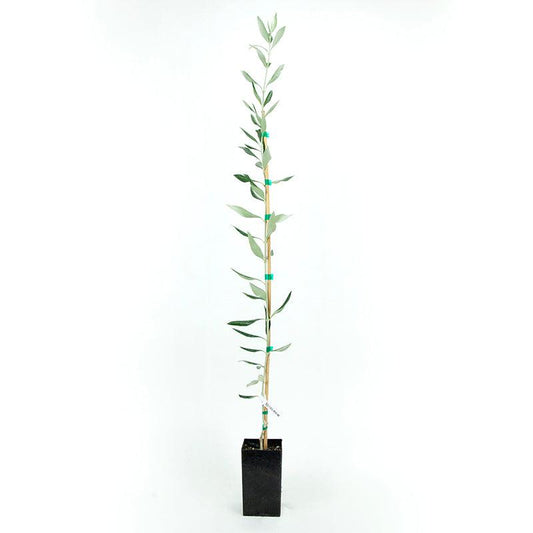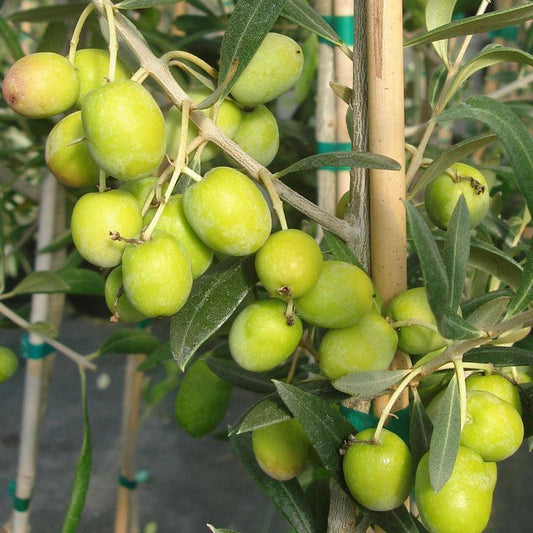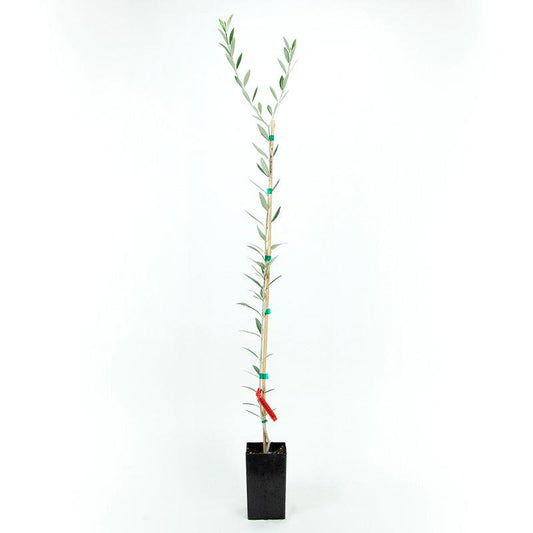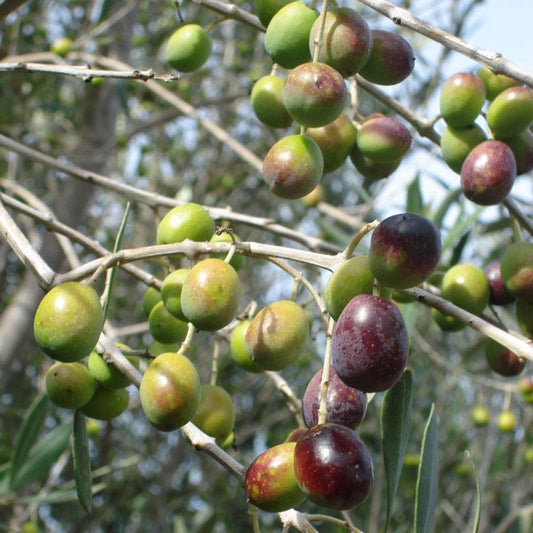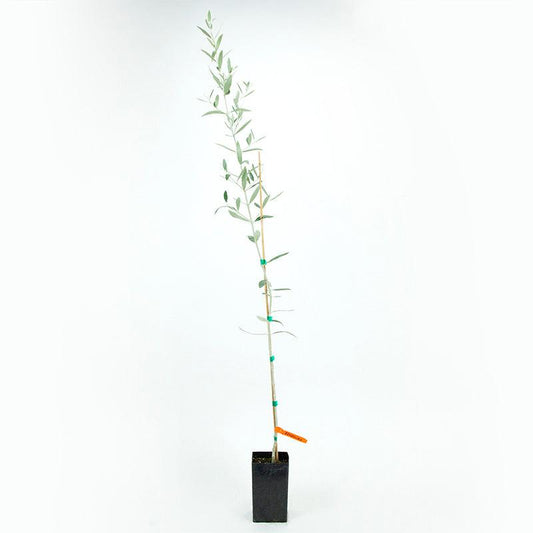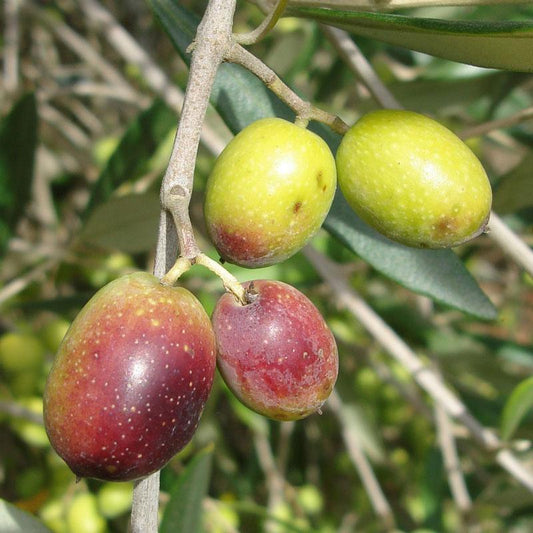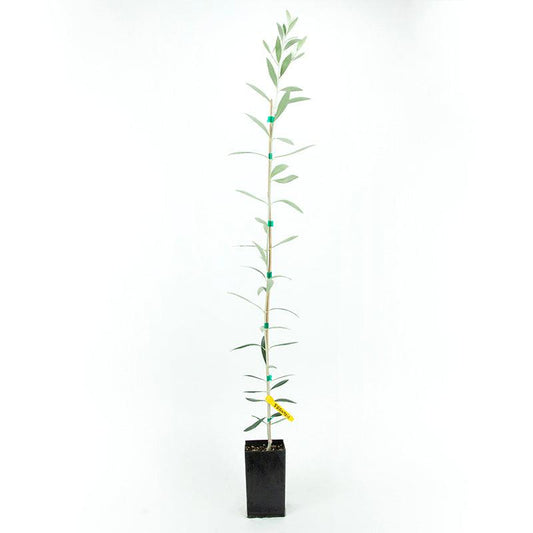How Do Olives Grow? Understanding What Do Olives Grow On and Where Do Olives Grow
Introduction
Olives have been cultivated for thousands of years, revered not just for their fruit and oil, but for their symbolic meaning in cultures around the world. These evergreen trees thrive in dry, warm climates and can live for hundreds—even thousands—of years. If you’ve ever wondered how do olives grow, where do olives grow, or what do olives grow on, this comprehensive guide will walk you through everything from propagation to harvesting.
Whether you’re planning to plant olive trees in a garden, grow them in containers, or start a small orchard, understanding how to grow an olive tree—from seed or cutting—is essential. Learn about the best practices for growing olive trees, selecting varieties, ideal climates, soil needs, and harvesting techniques. Explore our full Olives Growing Guide for additional insight.

Overview of Olive Cultivation
What Do Olives Grow On?
Olives grow on olive trees (Olea europaea), which are evergreen and slow-growing. They are typically 25–30 feet tall at maturity, with silvery green foliage that is both ornamental and functional. These trees bear small, fragrant flowers that develop into the fruits we know as olives.
Where Do Olives Grow?
Olive trees grow best in Mediterranean-like climates—hot, dry summers and mild winters. They thrive in USDA Zones 8–10, though cold-hardy varieties allow cultivation in Zones 6–7 with proper care and protection. Learn more about your USDA growing zone here or visit Find Your USDA Zone.
Check out this guide on Growing Olives in Zone 7 if you’re planting in cooler climates.
Importance in Agriculture
Olive cultivation plays a crucial role in sustainable agriculture. Their drought tolerance and minimal fertilizer needs make them ideal for dry, rocky soils. Varieties like the Arbequina Olive Tree are valued for high oil content and reliable yields.

How to Grow an Olive Tree
Ideal Growing Conditions
- Sunlight: Olive trees thrive in full sun and require at least 6–8 hours of direct sunlight daily to produce healthy foliage and abundant fruit. Make sure to plant your tree in a sunny spot, free from shade.
- Soil: Choose well-drained soil that is slightly alkaline, ideally with a pH between 6 and 8.5. To boost soil fertility and promote strong root development, incorporate organic matter like Peaceful Valley Organic Compost before planting.
- Drainage: Good drainage is crucial—olive trees do not tolerate soggy or compacted soils, which can lead to root diseases. If your soil tends to retain water, consider planting in raised beds or selecting a different location with better drainage.
- Spacing: When planting in orchards, space trees about 18 feet by 14 feet apart to allow for adequate air circulation and sunlight penetration. For dry-farming practices, where irrigation is minimal, wider spacing of 24 feet by 24 feet helps trees access more soil moisture.
For a hands-on guide, check out our video on Planting Olive Trees for step-by-step instructions.
Watering & Fertilization
Though drought-tolerant, young olive trees require consistent watering—about 2½ gallons weekly during the first year. Mature trees may need supplemental irrigation during severe droughts.
Fertilize in late winter or early spring. Use a soil test (available here) to assess pH and nutrient levels. Add garden lime or soil sulfur as needed.
Pruning & Maintenance
Minimal pruning is needed during the first four years—focus on shaping the tree and removing suckers. Mature trees should be pruned to open the canopy for light penetration. Read our Summer Pruning Guide for seasonal tips.
Use organic weed control and mulch to prevent competition and conserve soil moisture.

Olive Tree Varieties
Oil-Producing Trees
- Arbequina: Known for its high oil content and self-fruitful nature, making it a popular choice for olive oil production.
- Frantoio: Produces a fruity and aromatic oil prized by many olive oil enthusiasts.
- Koroneiki: A high-yielding variety with a robust flavor, often favored in Mediterranean climates.
Table Olive Trees
- Manzanilla: Excellent for pickling and fresh eating due to its mild, tangy flavor.
- Mission: A versatile and cold-hardy variety that performs well in diverse climates and is suitable for both oil and table use.
For help selecting the best variety for your garden or orchard, see our guide: How to Choose Olive Trees.

How to Grow Olives: Seed vs. Cuttings
From Seed
Growing olives from seed is possible but generally slow and unpredictable. Seed-grown trees may not produce fruit identical to the parent and can take many years before fruiting. This method is less common for home growers aiming for reliable harvests.
From Cuttings
Propagation using semi-ripe cuttings taken in early spring is the preferred and more reliable method. Cuttings inherit the parent tree’s characteristics, ensuring consistent fruit quality and tree performance. This approach speeds up fruit production and is widely used by commercial growers.
Container Growing
Olive trees can thrive in containers if given the right conditions. Use a large pot (at least 18–24 inches wide) with drainage holes to prevent root rot. Choose a light, well-draining soil mix—ideally a blend of potting soil, sand or perlite, and compost.
Place the pot in full sun—olive trees need at least 6 hours of direct sunlight daily. Indoors, a south-facing window or grow lights are best. Water deeply but only when the top few inches of soil are dry; overwatering is a common issue.
Potted trees benefit from regular feeding during the growing season with a balanced, slow-release fertilizer. Watch for pests like scale and olive fruit flies, and use organic treatments such as neem oil if needed.
Regular pruning keeps the tree compact and encourages fruiting.

Fruit, Harvest & Olive Oil Production
- Time to Fruit: Olive trees generally begin bearing fruit 5–8 years after planting. Some varieties may produce earlier if grown under ideal conditions.
- Factors Influencing Yield: Fruit production and quality are influenced by the tree variety, pruning practices, pollination success, and overall environmental conditions such as temperature and soil health.
- Harvest Season: Harvest typically occurs in the fall. Olives may be picked green (early harvest) or black (fully ripe), depending on their intended use—whether for curing and eating or for pressing into oil.
- Harvesting Tip: Use tools like the Roo Gardening Apron to make collecting fruit more efficient and hands-free.
- Curing Olives: Raw olives are naturally bitter and must be cured before they’re edible. Popular methods include brining, dry salt curing, and lye curing.
- Helpful Resources: For step-by-step guidance, watch our video on How to Cure Olives, and try our Greek Style Olives Recipe for creative ways to enjoy your harvest.
- Making Olive Oil: Olive oil is made by crushing harvested olives into a paste, then pressing or spinning the paste to extract the oil. This process typically requires specialized milling equipment.
-
For Home Growers: Many small-scale or home growers partner with local mills or cooperatives to press their olives. You can learn more about this process in our growing guides and instructional videos.
Pest and Disease Management
Common Pests:
- Olive Fruit Flies – One of the most damaging pests, these insects lay eggs inside the fruit, causing larvae to feed on the pulp, leading to fruit drop and reduced oil quality.
- Scale Insects – These sap-sucking pests weaken trees by feeding on leaves and branches, potentially leading to reduced vigor and sooty mold growth.
Common Diseases:
- Olive Knot – A bacterial disease that causes rough, tumor-like swellings (knots) on branches and twigs, often following pruning wounds or damage.
- Verticillium Wilt – A soil-borne fungal disease that affects the tree's vascular system, leading to wilting, leaf drop, and branch dieback.
Prevention & Treatment:
- Encourage healthy growth by maintaining proper tree spacing to improve air circulation and light penetration.
- Practice good orchard sanitation—promptly remove fallen fruit, pruned limbs, and other debris that may harbor pests or pathogens.
- Improve soil health through mulching, composting, and avoiding overwatering or poor drainage, which can stress trees and invite disease.
- Use organic pest control methods such as neem oil, beneficial insects, and pheromone traps to reduce pest populations naturally.
- Prune infected or damaged limbs during dry weather to limit the spread of disease and always sterilize tools between cuts.

Conclusion
How do olives grow? They begin as tiny, fragrant blossoms that become nutrient-rich fruits on evergreen olive trees. What do olives grow on? The answer is simple—olive trees. Where do olives grow? They flourish in sunny, warm regions with well-drained soils.
From selecting varieties like Arbequina or Manzanilla to understanding how to cultivate olive trees and deal with pests, this guide provides the tools needed for success. Whether learning how to grow an olive, starting from cuttings, or exploring how to grow olives from seed, this horticultural journey can bring a taste of the Mediterranean to your own backyard.
Start your olive-growing journey with our collection of olive trees and discover the joy of homegrown olives today.
FAQs About Growing Olive Trees
-
Where do olive trees grow best?
- Olive trees thrive in USDA Zones 8–10, with full sun, well-drained soil, and dry summers. Some varieties can grow in Zones 6–7 with care.
-
Do olives grow on trees or vines?
- Olives grow on evergreen trees—specifically the olive tree (Olea europaea).
-
Can I eat an olive right off the tree?
- No. Fresh olives are very bitter and must be cured before they are edible.
-
Where do olives naturally grow?
- They are native to the Mediterranean but now grow in California, parts of Australia, South America, and South Africa.
-
Can I grow an olive tree from an olive?
- Technically yes, but it’s difficult and unpredictable. Cuttings are more reliable.
-
Is it easy to grow olive trees?
- With proper sun, soil, and drainage, olive trees are low-maintenance once established.
-
How long does it take to grow an olive tree?
- Fruit-bearing begins 5–8 years after planting, with full productivity at 10–12 years.
-
Can you grow olive trees in pots?
- Yes. With ample sunlight, well-drained soil, and proper watering, olive trees grow well in containers.


